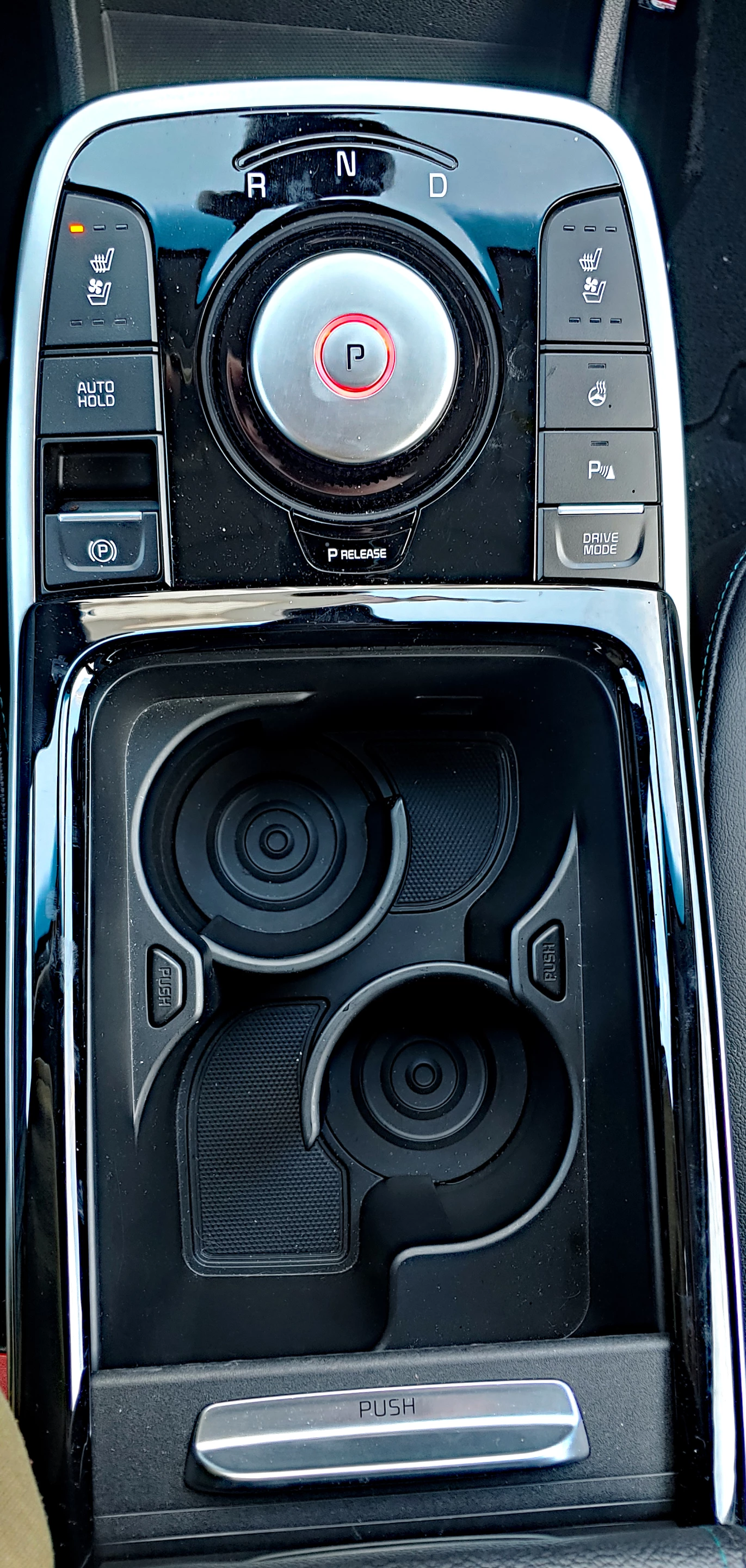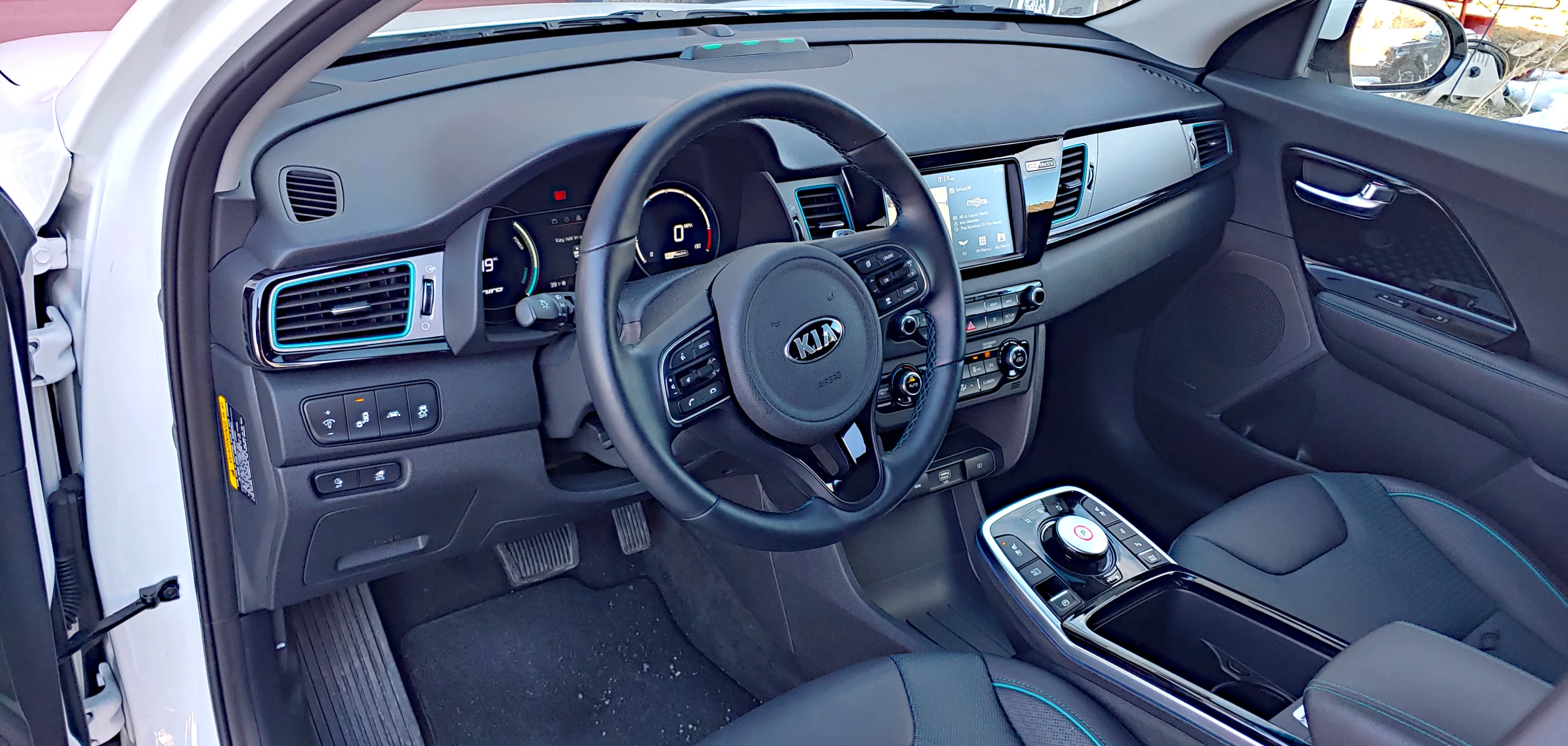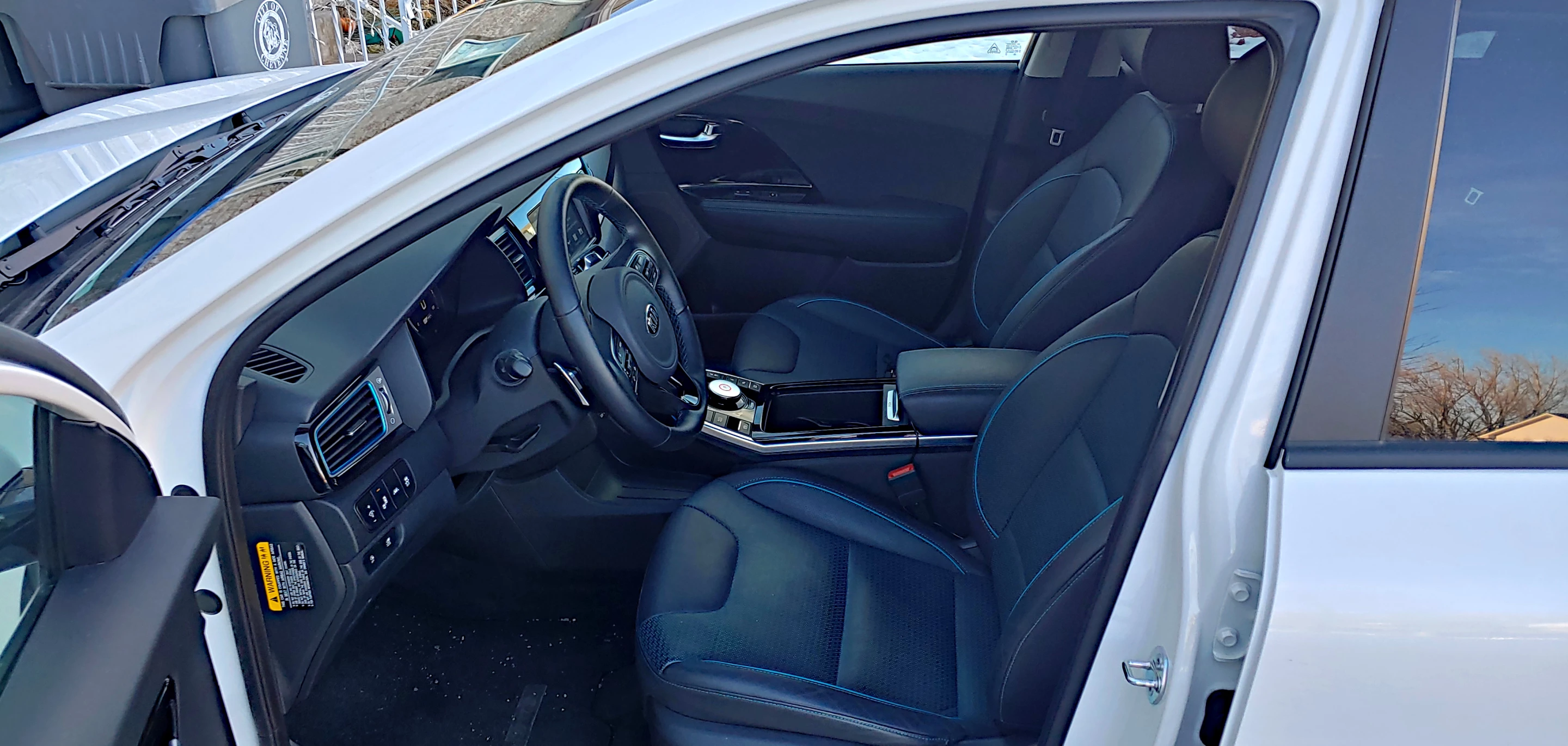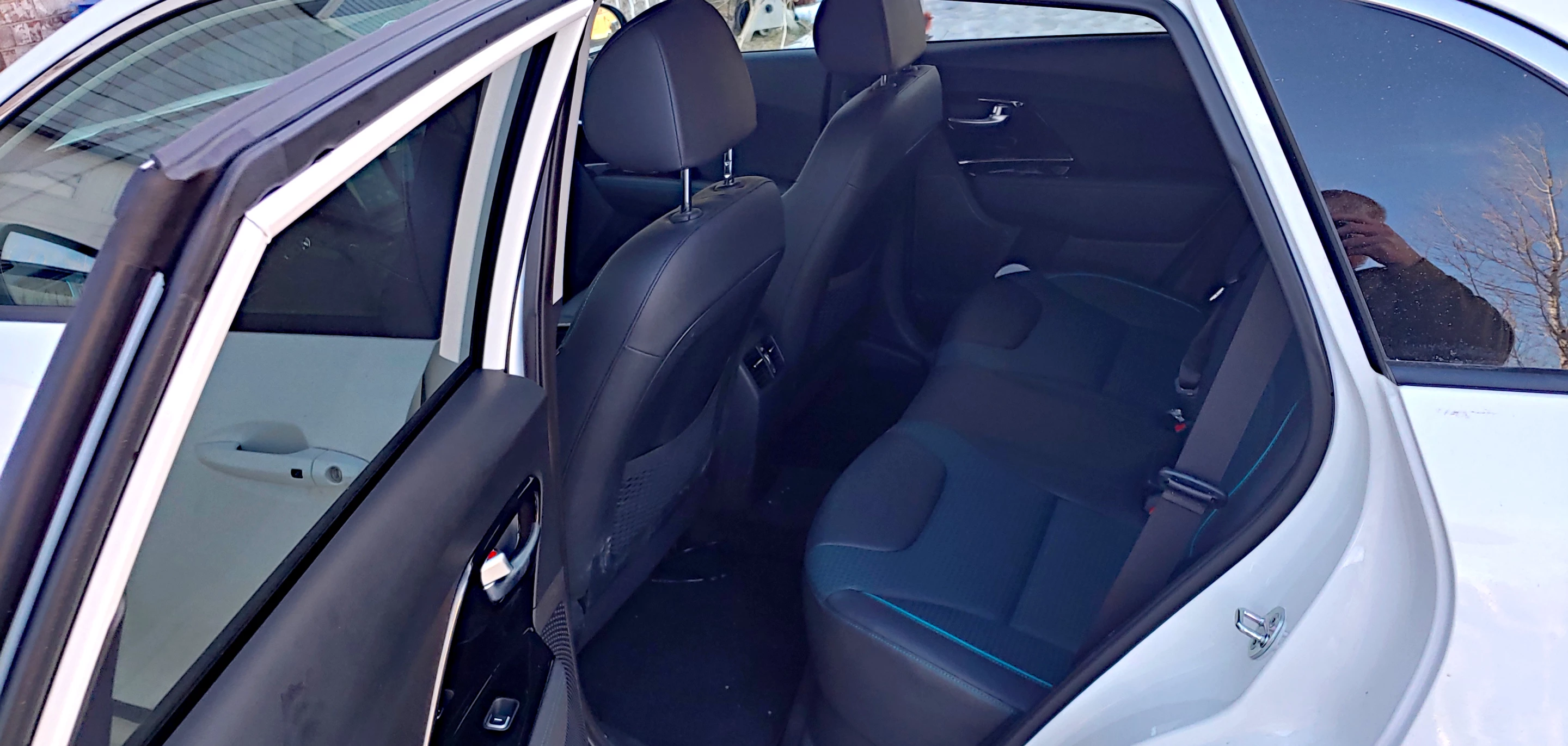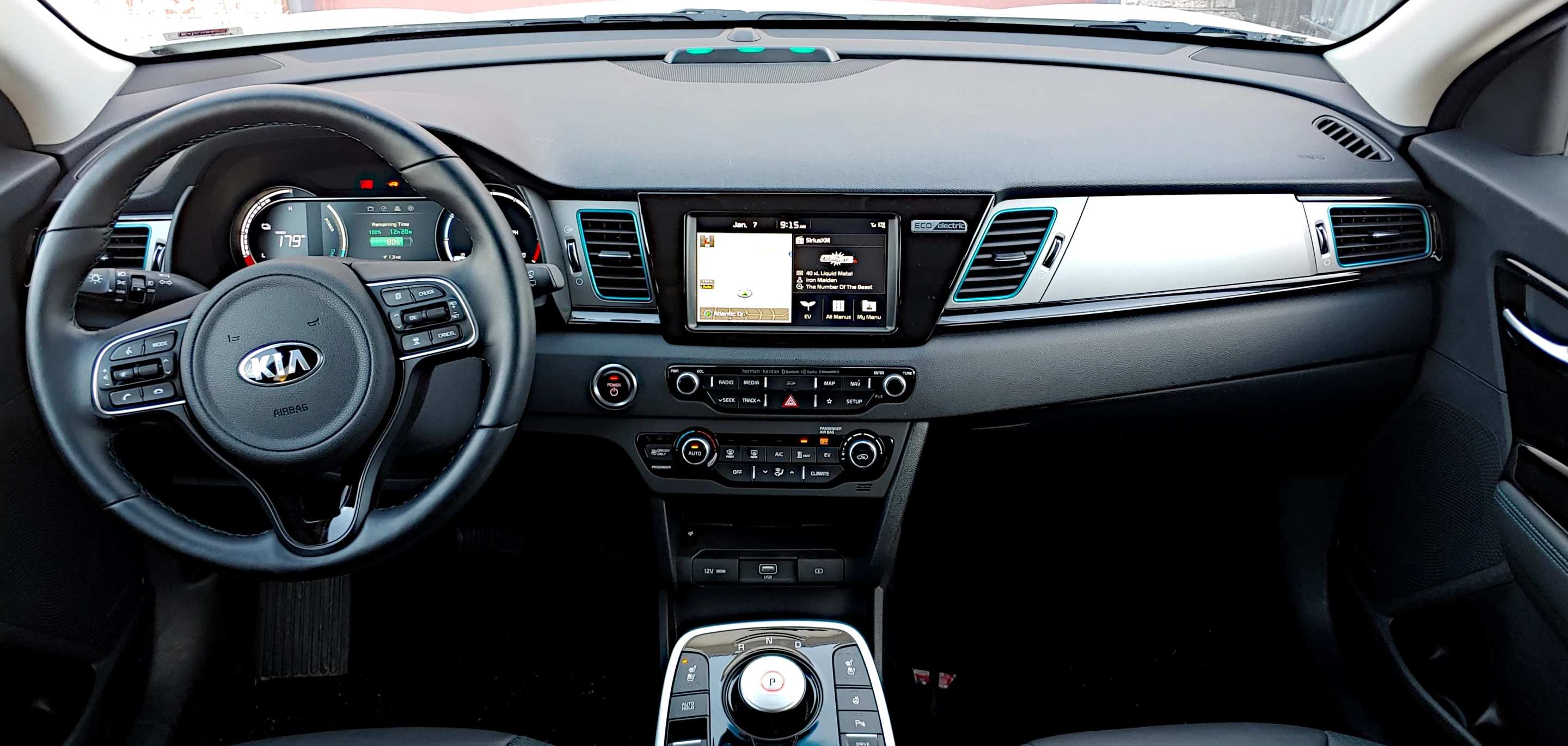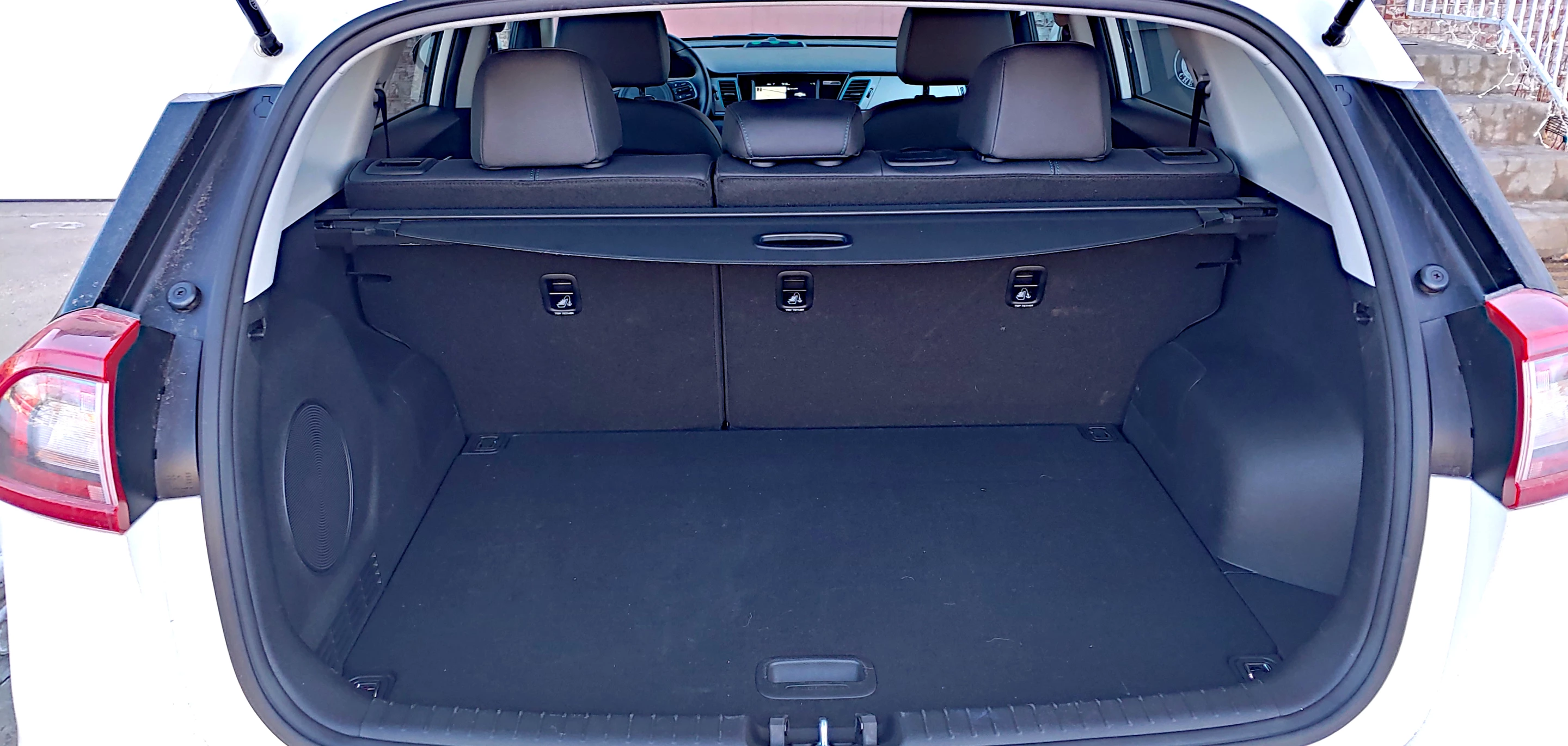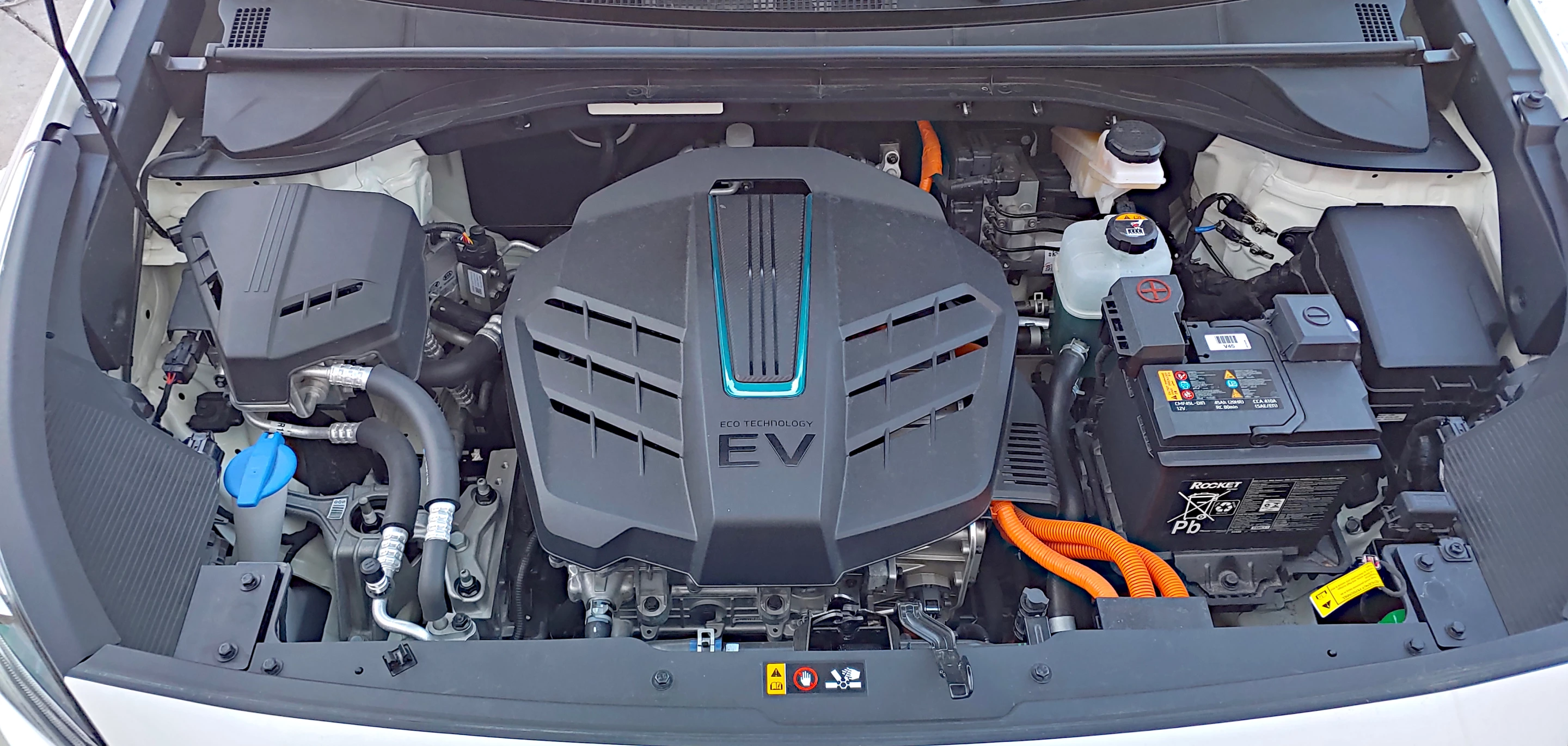The idea of electrified cars is compelling. Having spent time in several plug-in vehicles over the past few years, it’s become clear that the automotive industry is getting on board with the change. Are we there yet? Rural Americans don’t think so, and they’re right. I proved that with a Kia Niro EV.
At a Glance
- Size does matter
- We see how weather affects an EV’s charge state
- We put a worst-case test into motion
- Range anxiety is a thing and it matters
- Costs don’t match the savings
Most Americans live in cities and heavily populated counties. Urban and suburban life are the norm for a large number of us. The rest of us live in the sticks. I live in Cheyenne, Wyoming, which is a city by Wyoming standards, but barely a burg by the standards of those living in Denver, Chicago, Los Angeles, or Miami. Having been to those places, I know that there are shopping malls with higher populations than Cheyenne, and airports with more people in them than the entire state of Wyoming has in total.
A lot of Americans live in places like I do, where long distance driving is the norm and "in the neighborhood" can mean within 50 miles (80.5 km). In most of the western states of the US, for example, distances of 50, 70, or 100 miles (80-161 km) between towns with populations under 5,000 are not uncommon. Driving habits of 300 or more miles (483+ km) per week are not unheard of, and are more common than many might believe.
This means that a lot of the electric vehicles on offer right now are probably not a good fit for many Americans. Those country miles are put on pickup trucks, large SUVs, midsized crossovers, and the like ... because driving that far often means needing to haul a lot of stuff or people as well.
The Kia Niro EV was introduced for the 2019 model year and is based on the Kia Niro, which itself was introduced in 2017. The car has about 239 miles (385 km) of range, per the US EPA. In the real world, of course, mileage may vary. I spent a week in the Niro EV when Wyoming was experiencing some typical winter weather, including sub-zero overnight temperatures and harsh winds and snow/ice mixtures. I learned a lot about electric vehicles in that week, including what to worry about and what was overhyped.
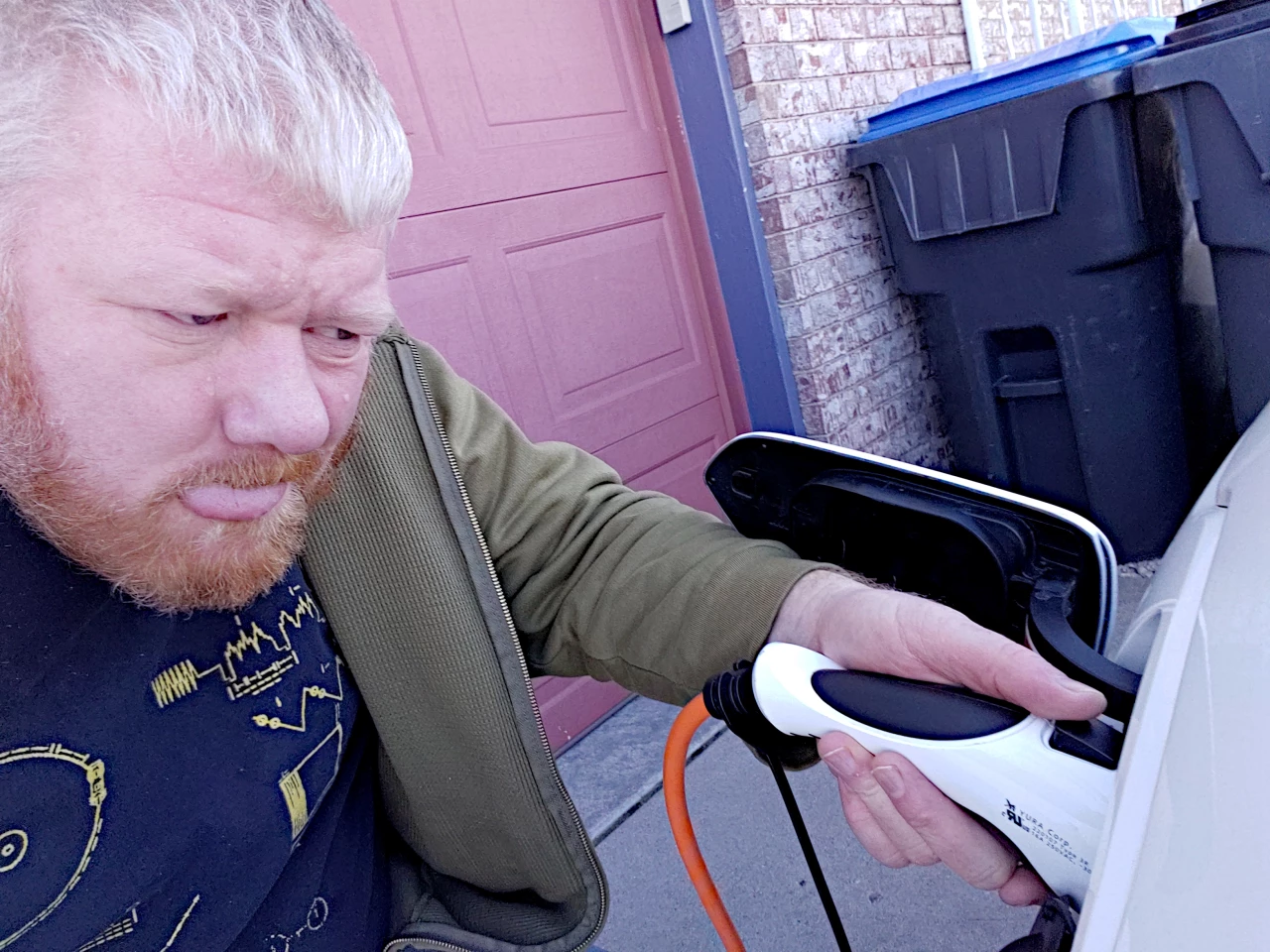
To start with, I had a list of expectations for the Niro EV. I expected:
- The mileage estimate to be way off compared to the real world
- The low temperatures to result in a lot of power loss in the batteries
- The terrible weather would greatly degrade range
- The spectre of range anxiety would make me not trust the car
- The Niro would be overpriced and under-outfitted
Those expectations were tested against reality during that week with the Niro EV. I did several tests in order to learn whether I was right. I started with the low temp losses and then went with shorter mileage tests to try the EPA estimates.
Since temperatures overnight were dipping to near or below 0 ºF (-18 ºC), I decided to leave the car as it was when it arrived in my driveway. It had about a 95 percent charge. Instead of plugging it in, I left it as-is and let it sit. The next morning, the charge hadn’t changed and temperatures had risen to a balmy 25 ºF (-4 ºC) or so. I did a quick drive around the neighborhood (less than a mile) to see if anything changed. The car’s range estimation dropped by almost 7 miles (11 km) in that mile-ish drive. That says that the cold temperatures did affect the overall range, but six to seven miles of a 226-mile (364-km) range estimation isn’t much of a drop. I did a second test of this, when the charge was far lower (at around 80 mi/129 km available) and had a very similar result. So my hypothesis about range losses due to weather was largely wrong.
Next, I tested real-world "fuel economy" for the Niro EV. I did this the same way I normally do MPG testing, but without the fuel station stop. Starting at one point, I drove onto the freeway, made freeway speed, proceeded a little over 10 miles (16 km), turned around at an exit, and returned to the same point. According to the car, total mileage used was 28 (45 km). The actual loop is 22.1 miles (35.5 km). Given the winter weather with climate control on (heat running), that was pretty good. I would have done a plug-in and measured input as I would with fuel filling, but that would have added city miles and distorted the outcome. I did my city driving loop (roughly 19 mi/31 km) and used only 17.5 miles (28 km) of charge (according to the Niro’s computer). An even better result. Again, I was proven wrong in my initial assumptions. I would get some payback later, though.
The next test was a round trip to Laramie, Wyoming from Cheyenne. On the map, it’s roughly 100 miles (161 km) of driving, but in reality it’s closer to 120 (193 km) and it involves some extreme altitude changes. During the winter in Wyoming, it also means variable speed limits on the freeway, high crosswinds, and perhaps questionable roadways. Adding into this was more worst-case: I was toting the entire family on this trip. With two adults, three kids, and a lot of coats and winter boots inside the car, this was going to test both my range anxiety fears and the overall mileage mettle of the Kia Niro EV – not to mention its interior spaciousness. On the last count, it did well for a compact, so kudos to Kia for that.
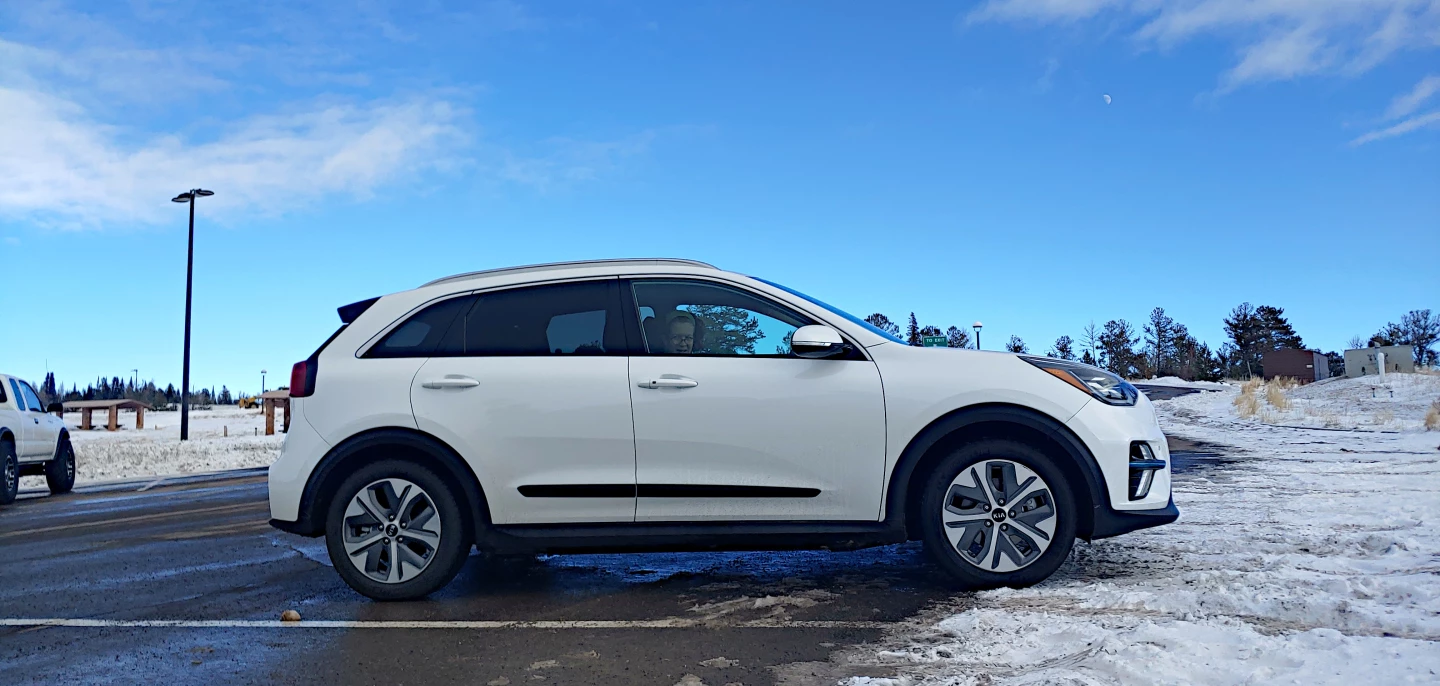
The drive took place during the day and we left in 30 ºF (-1 ºC) temperatures. Crosswinds ranged between 40 and 60 mph (64 and 92 km/h). Altitude change was a total of 2,400 feet (731.5 m) going up and a little more than that going back down into Laramie. We started having freshly unplugged the Niro EV with a full charge. The return trip saw the same route and conditions, though temperatures at the highest point were under 20 ºF (-7 ºF), and in Laramie were in the high 20s.
The trip itself was eventful, in its way, but no more eventful in the Kia Niro EV than it would have been in any gasoline-powered vehicle. Outside of my worries that the range was going to drop at any minute (it did, at the summit) and we would be stranded somewhere (didn’t happen), the reality was still pretty harrowing. When we arrived back at home, parking in the driveway, we had 80 miles (129 km) of range on the car. But that doesn’t tell the whole story.
On the way back, downhill from the summit between Laramie and Cheyenne, the mileage estimate for the amount of range left had dipped down as far as 25 (40 km), which would have barely been enough to get back. Once home and plugged in to get a better idea of the real usage, I found that the real-world power left was closer to 70 miles (113 km) of range using the mileage numbers I’d gotten from my own testing earlier. My range anxiety fears were justified, I think, but some of that is due to the car’s computer and its way of estimating mileage. My best guess is that the computer was using averages that included the initial climb up to the summit and that average greatly increased power expectations.
I did, despite that sphincter-puckering moment, learn to trust the Niro EV’s general estimates for range and not to take any single reading as the reality. Going from the battery’s charge state (by percentage) works better for short looks, and long-term estimates are definitely more accurate on the Niro’s computer. Charging, however, is highly variable if not on a dedicated charger, so that is also worth noting. A wall plug will deliver varying amounts of power, according to load elsewhere on the circuit. Total charge times for the Niro EV when down to 25 percent or so ranged from 23 hours to over 40 when plugged into a 120V household socket.

Now to the last point. The Niro EV is priced pretty fairly for what’s now considered "affordable" in the electric vehicle market. It starts at about US$38,500 and can run to the mid $40,000s when fully loaded. Given the compact size and generally mid-level interior design and feel, though, that is very out of whack with the price point of a similar, non-EV vehicle. Pricing for the gasoline version of the Niro starts at $23,490 and tops at about $32,000; and no amount of creative accounting can find fuel savings making up for that huge price difference during the lifetime of the car – not when comparing accoutrements at apples-to-apples. Incentives may make a dent in that, but not everyone can count on incentives.
So my overall feelings about the Kia Niro EV are mixed. I was glad to learn that many of my expectations were wrong, and that a mainstream EV could beat those. I was disappointed to learn that some of my assumptions were correct, however, and that for rural Americans, even these new long-range EVs cannot be expected to be a primary vehicle.
Product Page: Kia Niro EV







